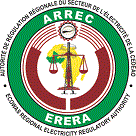Chief Executive Officers of Hydropower generation companies across the globe who participated in a meeting convened by the International Hydropower Association (IHA) to discuss how hydropower can contribute to global recovery efforts are of the view that an economic stimulus packages involving investment in sustainable hydropower among other renewables will be essential to Covid-19 recovery efforts.
Eddie Rich, International Hydropower Association’s CEO, and eleven hydropower CEOs and top executives from IHA’s membership, presented a united message on the need for sustainable hydropower as part of the energy mix for a green recovery.
The General Manager for Yalong River Hydropower Development Company, China Mr. WU Shiyong, said, “Increasing hydropower investment will support the economic revival in China. It is expected that we will start construction of a project involving investment of around USD20bn in the second half of this year. In other parts of the world there is a need for increased investment in hydropower to recover from the crisis.”
Contributing to the discussion Irene Cañas who is CEO of Instituto Costarricense de Electricidad, Costa Rica, said, “I believe that in the recovery from Covid-19 we should be sure to do it in a sustainable way and thinking not just of electricity but also of water. These two needs are very important in the world right now.”
“We hope the IHA and IEA can support hydropower sustainable development and help in setting up national energy policies so that we have tax incentives, green bonds, and fast-track approval by the authorities; and also potentially look at internationalising the renewable energy certificate initiative,” James Ung Sing Kwong, CEO, SEB Power, Malaysia said.
On his part, Gil Maranhao Neto, Chief Strategy, Communications & CSR Officer of ENGIE Brasil, Brazil noted that a good measure done by the Brazilian gov’t was the declaration of suspension of financing and debt service payments for projects being done by the federal bank for up to six months. This could be followed by other countries.”
Neto added: “Brazil is not building any hydropower at this time. Getting even basic engineering design and environmental studies required for the licensing takes between two to three years. We should urgently resume the preparation of projects.”
“One of the main concerns is the low cost of electricity around the world; it will be very difficult to finance hydropower projects. We see that sustainable hydropower projects are competing with wind and solar for example with green subsidies. It’s important to find ways to get the right long-term market conditions to support hydropower development,” Hörður Arnarson, CEO, Landsvirkjun, Iceland.
“This technology of hydro has proven you can run it during a pandemic situation so if you look through the lens of future modernisation, how do we pandemic-proof our hydro plants? How do you minimise the impacts?” Herbie Johnson, General Manager, Southern Company, US.
“It is important to focus on maintaining the existing capacity of the hydropower fleet through refurbishment activities. We would also like the IEA to support a long-term framework for the future,” Hilde Bakken, Executive Vice President, Statkraft, Norway.
Anton-Louis Olivier, CEO of REH Group, based in South Africa, said: “With the growing emphasis and prevalence of solar and lower cost but intermittent resources, we should not neglect the need for hydro to create the base on which these lower-cost technologies can also enter into the market.
“My message to the IEA in dealing with the international financial sector and multilaterals guiding the future of the energy sector in Africa is to remember that hydro, large and small, can still play a significant role in the continent, and can contribute to a growing and decarbonised power sector.”
Yves Marie Giraud, Director of EDF-Hydro, France, said hydropower was the best way and the only way to store energy in large quantities and over long periods, but markets should be designed better to reflect this.
“Usually, we do not have the appropriate market design nor the mechanisms to support storage in general, and pumped storage plants in particular.”
This, view was echoed by Stephen Davy, CEO of Hydro Tasmania, Australia, who said: “Pumped hydropower investment is the easiest and most straightforward way to maximise solar and wind generation in the energy system. In Australia, we are promoting the market measures required to properly value storage and flexibility.”
The Executive Director of IEA, Dr Birol acknowledged the points made by the hydropower CEOs, including about the importance of storage, modernising plants, and keeping long-term policy support; as well as the multiple non-energy benefits of hydropower, such as flood and drought control, irrigation and climate resilience.
As well as feeding into this week’s IEA World Energy Outlook special report, the discussion will be considered for the IEA’s Clean Energy Transitions Summit on 9 July 2020. Dr Birol pledged to take the feedback from the meeting to the government ministers and policymakers attending the Summit.
Roger Gill, IHA President, said the meeting was very timely for the hydropower sector to outline the measures needed to spur sustainable hydropower and support the recovery, particularly relating to incentivising storage and modernisation projects.
















